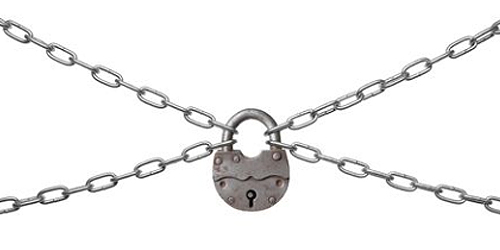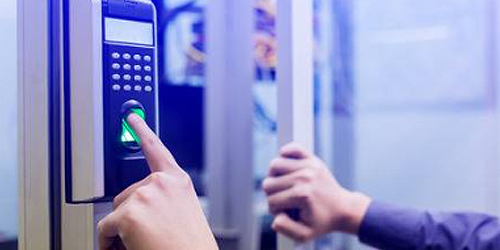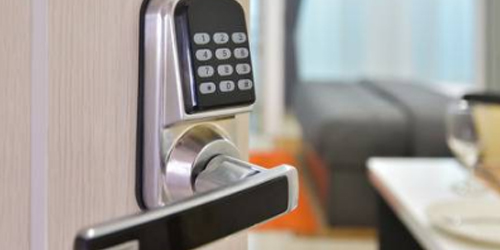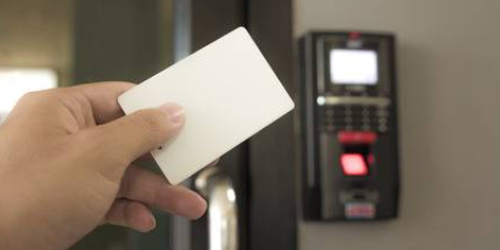Neuro Systems – Security – Access Control Systems
Why would premises need access control?
There are two fundamental reasons business, residential or service premises might benefit or in multiple cases, require access control systems.

Anti-Theft
Only cleared personnel, residents, and visitors will have access to the building or designated areas within. Staff working on site have the right to feel safe and know that their personal property is afforded some protection against non-authorised individuals.

Resource Isolation
Varied levels of access allows for rooms within buildings the means to allow only authorised personnel. An electronic/digital system allows the business/security manager to revoke and grant access to individuals and groups from a central administration point.
Such an example of this would be a server room in a business site, it makes sense to only allow qualified IT engineers and perhaps a site fire officer access to this room under normal everyday circumstances.
The use of an access control system means that traditional door locks can be left in the open position (if they are already present), the access control system will lock the door using its own mechanism.
Timed Access Permissions
Systems are capable of granting access only during certain periods within a day or night, this can be aligned with the working hours of each individual employee.
Neuro Fire Offer 2 Types of Access Control Systems
Standalone Access Control
This is a popular system that is used to control access from one to many independent doors within a building. Means of access can be granted via an array of methods, these are dependent on the system type and complexity.
Modes of Access
PIN code entry via an electronic keypad
Alpha numeric push button lock
Magstripe token (keyfob)
Requirements of standalone access control
These systems are decentralised and therefore usually have to be programmed on a node basis, i.e. each door. Essentially if access is to be granted or revoked, it has to be completed at each door on the site. The systems are both faster and easier to install, with usually no special provisions required in terms of door and frame type.
Suitability
Standalone access control systems are generally favoured by small sites with a low number of users/staff/residents. Token or key code management is handled by the security officer/staff member and is fairly straightforward. Systems like these are readily extendible and work independently from one another allowing premise managers to quickly match the needs of the site as requirements change.
What sites would benefit from a standard access control system?
Small business premises
Sports and Leisure Clubs
Commercial and Domestic Storage Units
Medical & Dental practices
PC/Server Centralised Access Control
Computer centralised access, using a network, is considerably more advanced in its control methods and resource allocation. These systems have the capability to control access to any doors where a control node is fitted (locking component and access identification system).
The provision of a network computer access control system can often allow for several means of identification and clearance methods.
PIN code entry
Using a key or symbol pad with a combination entry code, combinations can either be sequenced or non-linear arrays. These are found in the majority of low to medium level secure environments.
Magstripe or proximity token
An employee ID card with a magnetic strip or more commonly a key fob style device that requires the user to either swipe through a reader or place near a sensor pad.
Biometric
For higher levels of security that require more stringent access control, finger print scanner, retinal scanners and facial recognition sensors are becoming more popular. These types of systems are more complex and are generally harder to override.
Possession module
This is small pocket stored ID device, allowing the owner to go through the door hands free as long as the device is about their person.
Multi Identification Systems
Systems with higher complexity can be set to require more than one form of ID recognition, e.g. a card magstripe is required followed by a correct pin code entry.
What sites would make use of centralised access control?
Large corporate buildings
Multi-site companies
Government buildings
Universities and colleges
Hospitals and Research Centres
Parking Garages
What is the most prominent advantage of a computer based access control system?
Having control over the entire user base and the active nodes (doors) in a building from a central point makes adjustments very quick and easy. Systems can be upgraded and extended fairly easily. With some systems, it is possible to integrate event reporting and CCTV monitoring.
Conversely, managing numerous doors and more than several groups of users can become a cumbersome task for sites that use standalone systems. The time involved for the security manager becomes impractical and inefficient through cost. Keys can become lost, copied, stolen, or filed incorrectly in a master key cupboard. A centralised access control system eliminates this problem and can let your security manager know who went where and when.

How Can Neuro Systems Help?
Our highly trained team will make sure that your business meets all of the requirements imposed by EU legislation, BS 5839 standards, your insurance company, and your local Fire Officer. We have over 25 years of experience in installing and maintaining fire alarm systems for businesses and organisations across the East Midlands.


